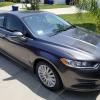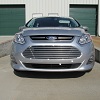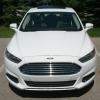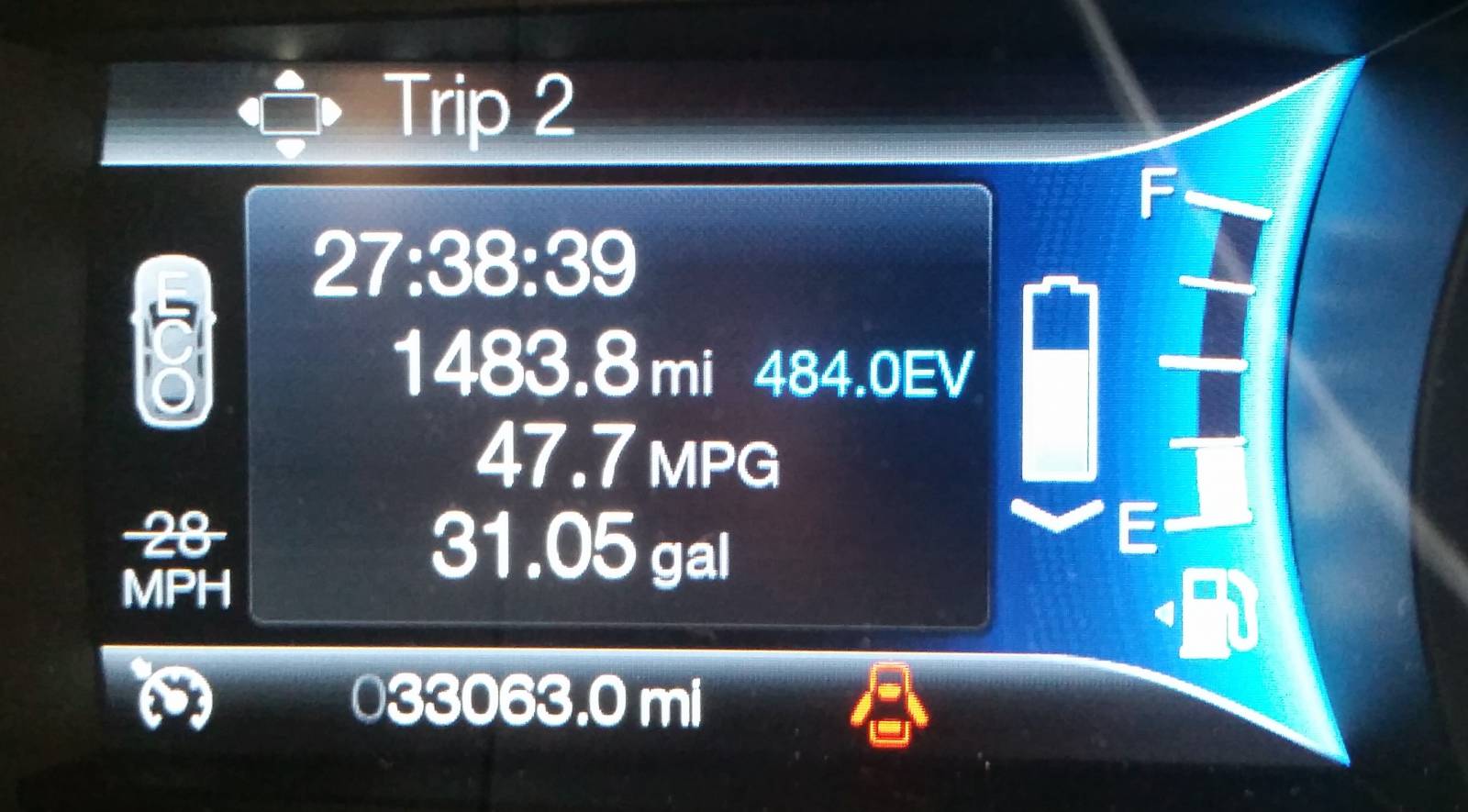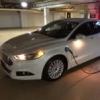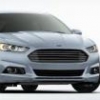Search the Community
Showing results for tags 'MPG'.
Found 60 results
-
If you look careful, the engine tach indicates ~1.2k rpm, the mpg readout at roughly 55mpg. I've seen this stuff on Geo metros, or Mitsubishi Mirages, doing 35-50mph, but never on any vehicle doing 75mph. It also kept that mpg rating for most of the ride. Just required extreme throttle precision, and a foot that won't move the throttle by even a single millimeter! https://youtu.be/axH4_pB8fDE
- 11 replies
-
Hello All, I am new to the forum. I purchased a used an 11’ fusion hybrid from Ford dealership 2 days ago, my right front tire is almost completely flat in the morning, luckily I have a gas station half block away where I fill and drive to work. my question is, IF the dealership tries to not cover this tire as faulty on their end which tire is recommended for SoCal weather, long commute to work and home (35-40 miles each way) ?
-
Hello, My wife owns a 2016 Ford Fusion Hybrid and within the last year we have been noticing diminished MPG. She drives A LOT for work, and a good mixture of highway and surface street driving, she's had it almost 4 years and has put 90,000 miles on it. Up until about 6-8 months ago she was consistently getting 38MPG, around 500 miles to a full tank of gas. Recently however she's been lucky to get around 28-30MPG and around 400 miles to a tank. No changes to the way she's driving, Even when I drive it and I purposely try to drive more conservatively I notice I cannot get anywhere close to 30MPG, even in stop and go traffic. I took it into the dealership because recently is started driving very rough, shaking and rough rides to the point it shakes the steering column at higher speeds. This is also the 3rd time I've taken it to the dealership for the MPG concerns. They couldn't reproduce any of the concerns, but did notice a noise coming from the transmission so they are going to take it apart on Friday and see what is happening. I know nothing about these types of cars, I don't know if a transmission can affect a hybrids MPG? Do the hybrid batteries they use in these vehicles deteriorate over time like other types of batteries? I would find it odd if they did to this level that within 4 years and 89000 miles it would function 25-30% worse. Ironically enough when I fought the dealership enough to give me a rental, Enterprise gave me a 2019 ford fusion hybrid, and taking the exact same route home, 11 miles, in stop and go traffic I got 45MPG average. Has anyone on here experienced anything like this, or have any suggestions when dealing with the dealership? The dealership tells me everything is fine, and I'm guessing unless they can plug it into a computer and get a glaring failure telling them what to replace they don't do much with these vehicles when it comes to repairs. I have a call into Ford corporate and will hopefully get a call back tomorrow and see if this will ignite a fire in them to actually try to repair the vehicle the right way. Thank you,
-
Hello, Back in 2012, I purchased an used 2002 Toyota Prius with 80k miles at an auction for $4800. It was great and I averaged around 52mpg average upon usage. The model line of first generation prius (2001 - 2003) had some defects, but the main one was the extremely small tires. They needed replacement just over a year of usage (about 15k miles with my driving). Anyway, it recently gave out at 220k miles and the repairs were just too much for what the car was worth. After doing some research on what I'm looking for and what my needs are, I've landed on purchasing a Ford Fusion Hybrid. My main questions revolve around how high the MPG can go assuming you're using good MPG hybrid driving techniques and live in mostly sunny weather (Los Angeles). The EPA estimated MPG for old 2002 Prius was 41mpg, but I was about to reach around 52mpg. The Ford Fusion Hybrid had an EPA estimated 42mpg, and I was wondering if I would be able to stretch the MPG to around 52mpg or higher like I did my old hybrid? I've been reading the information on this forum which has been extremely helpful, and have even seen a 600 mile club! :)
-
Since I've got my '10 Fusion Hybrid back from the dealer (after the Takata airbag recall repair), I've noticed that it's impossible to run in EV mode unless I'm coasting to a stop or going downhill. Previously I could gradually accelerate to about 45 MPH using a very light foot and stay in EV mode the entire time, even cruising for a mile or so at that speed. My fuel economy is only down about 10%, 37 MPG vs. 40 MPG but it's frustrating to have the ICE kick in when it's unnecessary. Anyone else experience something similar?
-
Posted 25 October 2015 - 09:56 AM Now that temperatures are going down for Newbies you may have noticed your MPG's go down also. You can expect 2 MPG drop for each 10*F drop in temperature. So a temp drop from 70*F to 40*F would be a drop of 6 mpg. Here is what you can do to to get some of that back without spending a lot of money. 1. Use some kind of Grill blocking method, Grill Covers, foam insulation or tape. Center Grill opening should be covered all year around, I have been using Grill Covers for 4 1/2 years/ 150K mi. now. I only remove the lower Grill Cover when going on long uphill grades. Worth 2-4 mpg's Grill Cover using Clear Packing Tape Grill Cover using Velcro attachments LEXAN Plastic 2. Use 50 PSI in your tires, not much difference in ride quality, but it improves mpg's and your tires wear great. I got 64k mi. on first and second set. Worth up to 1mpg. 3. Oil Pan Heater speeds up ICE heating and heat available for the car heater. The only Oil Pan Heater I could find small enough to fit the bottom of oil pan was a Wolverine Model 9 Oil Pan Heater which you can get on eBay. You can put one on the back of the block to have a total of 250 Watts, but enough to raise WT by 40-50*F. Worth about 2-5 mpg on short trips and you have heat almost immediately. YA! BTW I put a block heater in mine which adds about 400watts and 65*F increase in temp which is great, but it is very hard to install. 4. Park facing the Sun which will keep ICE and inside of car warmer. If you can use seat warmers instead of heater. Worth 1-4 mpg. Make trips during the warmest time of the day. These are kind of obvious ideas, but they are worth mentioning. 5. Premium Gas is worth 2 mpg in my experience, but may not be worth the additional cost. That is what I use. Note: 1. The first time you start the car, cold or hot, HVB charged or not, ICE will start running when you hit 35mph to lubricate Transmission. 2. ICE wants to get to 128*F before it will operate normally. With ICE block heater and oil pan heater I have been able to get to this temperature and be in normal mode almost from the start. I think it is more efficient to use the EV to get to speed so when ICE comes on it is making significant power to move car, charge HVB and heat up up the ICE quickly. 3. When temps drop below 70*F it's time to block the top grill to keep the ICE compartment warmer. This can be done as simple as using clear packing tape from hood down to bottom of top grill or use LEXAN sheet cut to fit the opening. 4. When accelerating use two BARs on the Empower Gauge, this is where the ICE is most efficient, heats up ICE quicker and charges HVB faster. 5. Use EV from a start to 15-20mph, this gives good acceleration and is more efficient than ICE at those slow speeds. Remember you want to minimize ICE time and maximize EV time to get good gas mileage. Paul
-
After 5 fillups: Distance - Average: 340 @ 45,4 210 @ 50.8 340 @ 40.7 336 @ 40.3 485 @ 47.4 For a weighted average (if my arithmetic is correct) of about 44.7. I suspect the 50.8 was a case of not filling the tank enough. Since the third fill, I've been filling on slowest automatic pump setting, waiting till shut off, then waiting about 4 seconds, filling with hand, second shutoff, wait about 4 seconds, filling with hand, and getting 3rd shutoff.
-
I see this topic here and there but not on the Hybrid Driving discussion. I understand I can shift into L any time. I can shift into reverse or park at 75MPH if I want to. Does car ignore L like it does R and P when on highway going flat or uphill? 1. How can I use the L (low) button to boost my MPG? 2. Should I use the downhill button at anytime other than going down a mountain or pulling a motor home (yeah right..)? From the 2017 FFH manual page 147 Low: Low (L) is designed to mimic the enhanced engine braking available in non-hybrid vehicles. Low gear will produce high engine speeds to provide necessary engine braking. This is normal and will not damage your vehicle. In low gear, the gas engine will remain on more often than in drive (D).
- 12 replies
-
- downhill button
- low gear
-
(and 1 more)
Tagged with:
-
2017 SE with 18k miles on the odometer. Trip 1: 340 miles @ 45.4 mpg Trip 2: 210 miles @ 50.8 mpg Trip 3: 340 miles @ 40.7 mpg weighted avg for 3 trips ≈ 44.9 mpg. I should have noted the display average. I may have pictures of average; I'll have to look and edit post if I do.
-

Different method of driving -- my experience getting 50+ mpg
58Desoto posted a topic in Fuel Mileage
I'm a newbie at hybrid driving. But being a retired GE engineer I am always thinking what my drivetran is doing while driving. My first tank i got 39 mpg with the A/C on. Noticing my battery level drop at red lights i began turning the a/c off at red lights, next tank got 44 mpg. Turning the a/c off but running the fan seems to keep the compressor engauged as cold air will come out when the fan is running at first start up so i kill everything. One thing i did notice is the low mpg numbers i was getting in ice mode. After putting some thought into it i began starting from a stop using ice to just below the speed limit then switching to electric and raising my speed to 5 mpg over the speed limit when the ice kicks in i slowly reduce my speed to 5 miles under the speed limit. what this does is to raise my ice mpg as i look at the mpg gauge. I have yet to use a full tank using this method but every trip i have driven has gotten over 50 mpg with the a/c on and many trips at 56 to 58 mpg when I have the a/c off -
OFFLINE ptjones I have about reached the limit for AERO and Temperature Efficiency Improvements like Grill Covers and Wheel Covers for my CMAX. With temps in the 80's*F I can average 50-54mpg at 65-70mph with no A/C on the HWY. Not bad, but I'm still looking to improve more. I remembered someone had said the ICE is very inefficient so I looked it up and to my surprise it is only 25-30% at best. WOW So looking at GOV site and Wikipedia http://www.fuelecono...v/feg/atv.shtml https://en.wikipedia...gine_efficiency From Wikipedia: "Modern gasoline engines have a maximum thermal efficiency of about 25% to 30% when used to power a car. In other words, even when the engine is operating at its point of maximum thermal efficiency, of the total heat energy released by the gasoline consumed, about 70-75% is rejected as heat without being turned into useful work, i.e. turning the crankshaft.[1] Approximately half of this rejected heat is carried away by the exhaust gases, and half passes through the cylinder walls or cylinder head into the engine cooling system, and is passed to the atmosphere via the cooling system radiator.[2] Some of the work generated is also lost as friction, noise, air turbulence, and work used to turn engine equipment and appliances such as water and oil pumps and the electricalgenerator, leaving only about 25-30% of the energy released by the fuel consumed available to move the vehicle. In the past 3–4 years, GDI (Gasoline Direct Injection) increased the efficiency of the engines equipped with this fueling system up to 35%. Currently, the technology is available in a wide variety of vehicles ranging from less expensive cars produced by Mazda, Ford and Chevrolet to more expensive cars produced by BMW, Mercedes-Benz, and Volkswagen Auto Group." As you can see about 30% of the energy is absorbed by the cooling system from piston, cylinder walls and cylinder head and another 30% goes out the tale pipe. This got me to thinking about using a material that has very low Thermal Conductivity and as it turns out I help to develop STAR21G, a black material with Thermal Conductivity of: 1.25 W/(m K) at 25*C, 160 times lower than Aluminum,34 times lower than Steel. Aluminum: 205 W/m K) at 25*C steel: 43 W/m K) at 25*C Here are the advantages that I can think of.: 1. Potential MPG improvement of two times. 2. Almost instantaneous operating temp, no energy being absorbed by combustion parts and lower pollution. 3. Eliminate the need for a cooling system there by saving the cost for having one, may need oil cooling. 4. Cut pollution in half by using half as much gas for each mile. 5. ICE cars will be cheaper to own and operate then All-electric Cars and create similar amount of air pollution assuming they use coal fired power to charge battery. 6. Hybrids could improve MPG's more if we can use exhaust gases to run a steam engine generator to charge HVB from using exhaust gases. 7. Would increase HP and Torque by a factor of two for the same ICE design. 8. There maybe more advantages and I will add when I or someone else comes up with them. I'm thinking 100 mpg/ 1400mi. on a tank with a CMAX Hybrid on the HWY for 2018. (Maybe 2K miles with Hypermiling) This isn't a cost effective solution for current CMAX/ICE vehicles, but for Future Hybrid/ICE vehicles this could be a huge improvement in MPG/HP/ Torque and cheaper to make. IMO anyway. I might try to add this to my ICE now that I'm out of warranty if I get the opportunity. (133K mi) It would be interesting if I could get someone at FORD interested in my idea otherwise I'm going to put this information out to the Public Outlets and see what happens. I have applied for a patent too. Let me know what you think. Paul I thought I might clarify how a ICE (internal combustion engine) would work using STAR21G, black material. This is the way our 4 cycle engine works : Induction Cycle pulls in cool air from intake through cylinder head into combustion chamber cooling cylinder head, cylinder walls, piston and valves. Compression Cycle the air in the combustion chamber compresses further cooling it until the piston gets close to the top where it gets hot and fuel is injected into combustion chamber. Power Cycle fuel is burned and is slightly absorbed into combustion chamber. Exhaust Cycle hot gases are pushed out of combustion chamber with a little more heat absorbed into surfaces of combustion chamber. As you can see about half of the time the combustion chamber is being heated up and the other half it is cooling down. Because the ICE absorbs very little heat it shouldn't be that hot on the outside of the ICE. This is also why you will double your MPG's, because 30% of the total energy lost to cooling system won't be lost now. Or 60% of the energy will be moving the car and 30 % will be going out of the exhaust pipe. Paul
-
Hi, I have a 2016 Ford Fusion hybrid SE, and I am getting only 38 miles per gallon. While the sticker says its around 42 miles per gallon combined. Can anyone please comment on this? Also how much mpg are you getting? Regards, Shri
-
Youtube Video Tutorial: I'm wondering if one of our more experienced members might be willing to just go out and drive a set route and give driving tips for high mpg during it. I think anyone that makes a 2013-2016 ford fusion hybrid city driving tutorial video will get a TON of hits on youtube. Same goes for highway. I ask because I just got this hybrid and I’m having a lot of trouble getting the 44+ mpg number in city/town driving. Last night I went driving for the fun of it and created a 1.5 mile loop that I ran 5 times. I tried driving different ways and tested stuff out and got anywhere between 35 and 72 mpg per trip. I found the following: (All of these are hypotheses and are simply educated guesses on my part.) That driving at a lower speed increases mpg. (duh, lol) Accelerating at about 2 bars(2 KW - empower screen) with the gas engine (ICE) seemed to be more efficient than 2.5 - 3 barsAccelerating quickly (and accelerating quickly often) used a lot more gas than trying to stay in electric mode for certain short sections.Getting up to speed then letting off the accelerator a little in order for the gas engine to turn off and electric mode to turn on was very helpful.Getting 100% brake score is a challenge and requires a lot of patience when it comes to stop signs. (97-99% isn’t too bad though)Using Eco cruise control in town when possible is great as it charges the battery when you go down hills in order to stay at the selected speed. Also it is very smooth.cruise control tip: when cruising with the ice on and you want to switch to electric mode - double tap the set(-) button (lowers your speed by 1mph per hit), then when ice turns off, quickly hit set+(multiple times if needed) to get back to desired speed. Note: if you're about to go up a hill then back down, especially on the highway, you want to have the battery be at a pretty low charge so that it can recharge a lot on the way down. I think this tip may be very useful in that sort of situation.A/C uses a lot of energy and significantly decreases mpg - (is this true? about how much?) Any corrections/additions I receive for this list, if they are from experienced drivers, will be added or removed. If this list is accurate, it'd be a great thing for the description of a youtube video. Again, I think anyone that makes a 2013-2016 ford fusion hybrid city driving tutorial video will get a TON of hits on youtube. Same goes for highway. Thanks!!
-
Hello, I am wondering if anyone knows how the rear spoiler affects fuel economy? i ask because i watched this video: 2013 Ford Fusion Wind Tunnel Test specifically at 6:53 it seems like a spoiler may negatively impact the overall aerodynamics. Any info would be greatly appreciated -Thanks!
- 15 replies
-
From the album: Trips
-
During our road trip I've been able to gather and analyze a lot of data about how the car works. I'll try to break it down in parts.
- 56 replies
-
- Torque Pro
- ScanGauge
-
(and 7 more)
Tagged with:
-
I know that there is already a thread explaining the issue with the EPA numbers on some Ford 2013 and 2014 models. I went through the whole thread and didn't see anything for us Canadians, only the US information was posted. If you would like to see the whole topic as well as the video click here. I dug a little deeper on the www.ford.ca website and found out that us Canadian's are also getting a Goodwill payment for the fuel consumption changes. Here's a chart that represents what Canadian's will be receiving back from Ford. FYI: MKZ H owners will be getting $1,800 back. Here's are details: http://www.lincolncanada.com/service/adjustedfuellabels/ Ford will have all of these cheques sent out before October 30th, 2014 Here's the link to Ford's notice to Canadian customers : http://www.ford.ca/service/adjustedfuellabels/ It looks like I will be getting $925 back! Whoohooo!
-
Well today I took my work van, an E250, in for service and as usual rather than sit waiting I wandered the lot looking at the vehicles. There were not may FFH's in stock but those in stock had an additional sticker next to the normal sales information stating that the MPG's of 47, 47 and 47 was wrong and that new stickers were being printed! Well the salesman knew nothing about this and did not seem interested in finding out, so tonight I googled it and found this http://www.freep.com/article/20140617/BUSINESS0102/306170099/Ford-Fusion-Fiesta-C-Max-Lincoln-MKZ-EPA-mileage-mpg-checks Looking at the Ford website the new rating is 44 MPG City / 41 Highway
-
Now that we have reached summer temperatures (85°-110° for the daily range) here in the desert in Arizona, I have seen my HVB performance (and MPGs) go way down hill from what it was before. But now that the ambient temps are mostly above 90° from the get-go early in the morning and right around 105°-110° for my commute home, I can see my HVB takes much longer to charge and loses its charge much faster now at the same consistent highway speeds of 65 MPH that I always drive on the highway (speed limit of 65) during my commute. I have seen comments in this forum about the MPG decrease at increased temps for the FFHs being due to the A/C running, but I have previously easily achieved 47-49 MPG (mostly freeway) when running the A/C at the lowest fan level when the daily temps were in the 65°-90° range. I am still able to run the A/C at the lowest fan level most of the time even when the temps are between 100° and even 110°, so that doesn't seem to be cause of my decreased MPG. Whereas I was getting 47-49 MPG previously with the A/C running, I am getting more like 43-45 MPG, a dramatic drop to me, seemingly due to just the increased temps here in AZ. I don't even want to see what happens to my FE when we start getting up to the 115°-119° highs that we get frequently here in the hottest part of the summer. The Tesla website has a really cool range calculator where you can input your typical driving conditions. And if you input the summer temps we typically see in AZ in the summer, you will see their single-charge range drops dramatically with desert summer temps, probably more of a drop in range than if I were to drive their car at 75 or 80 MPH instead of my now-typical 65 MPH. Also another thing I have noticed here in Arizona, due to having warmer temps than everywhere else in the country, is that the EV+ mode is basically useless for me, since my car just about always starts up in EV (silent) mode. In fact, it wasn't until recently when we reached summer temps here that my FFH would ever start up with the ICE immediately, and that seems to be mostly due to my HVB discharging so rapidly on the road and even discharging some while the car is off, seemingly due to the temperatures hovering around 100°-110° for most of the day. I was wondering if anyone in the Southwest desert region of the country has ever tried using the ScanGauge to confirm this gut-feel that I have about the HVB performance at temps above 100° having such an impact on the HVB performance at these extremely high summer temps. And summer in AZ sucks for a FFH owner, but so far not nearly as bad as it seemed to suck for those in the cold, cold winter up North this past winter, and I'm hoping it stays that way for the rest of the summer here. I know, I know...I shouldn't worry about this small percentage decrease in MPGs, since I am still getting super MPGs and loving every minute of it. But I just wanted to share my experiences about high temps affecting my HVB performance, and whine a little bit about it since I was getting such great fuel economy before the high temps hit, and with very little effort on my part (as I was already driving my previous 2004 Buick Century like a granny). And it is a bit depressing to see my lifetime MPG average starting to go down for the very first time ever in the 3500 miles (4 months of ownership) I have put on my glorious, fabulous FFH. I love it when others on this forum gleam and gloat about the goodness of the FFHs, and I have no choice but to do so too. Sometimes I really feel like Ford designed my SE configuration of the FFH specifically targeted at me, since it is a top-of-the-line, full hybrid, packed into a luxuriously-comfortable mid-size sedan, and that looks so totally sporty and awesome on top of all of that techy greatness. Whoo-hoo for FFHs and FFH owners!!! :yahoo: :worship:
-
Looking at window tinting to reduce the need for summer a/c. My state allows 35% reflective ratio. Is this worthwhile and do you have any sense of the extent to which summer a/c is reduced? A relative swears by this on a Prius, but I remain skeptical. Any tasteful ways to get this done? I love the look of my Fusion Hybrid and wouldn't want to do anything that would cheapen the value.
- 10 replies
-
- tint
- air conditioning
-
(and 1 more)
Tagged with:
-
I looked back through my trip logs today and found the following data for the city route trip to my parents' house. On Saturday I had my best ever Regen miles for a trip home from their house with 1.0 Regen miles. Without that trip the Avg Regen mi is 0.8. I consciously tried to wait longer and brake closer to the 35 kW max as often as possible. As you can see in the table above, the black FFH did consume more SOC from the battery on average, leading to higher MPG. The black FFH consumed an average of 31.64 more wH from the HVB on these trips (3.14 - 0.88) x 1.4 / 1000. This amounts to 0.003 extra gallons of gas, assuming 33% efficiency of the ICE 31.64 / 33705 / 0.33. Since the black FFH consumed an average of 0.193 gallons if we add the extra gas we get 0.196 gallons instead. The white FFH is consuming an average of 0.219 gallons of gas. The adjusted black FFH MPG is 59.7 MPG. This leaves a difference of approximately 10.5% between the two cars. Some of the difference could be "break in" related since the white FFH had 1000-4500 miles on the odometer when I gathered this data and the black FFH had 18,000-19,000 miles on the odometer at the time of this data collection. But most of it I attribute to rolling resistance. I don't have warm weather data from the black FFH with SOC values to compare, but I will continue gathering data from the white FFH to update this data in the future.
- 4 replies
-
- tire size
- wheel size
- (and 5 more)
-
I bought a used 2010 Ford Fusion recently. We have had a wicked winter in Illinois. The car has 87,000 miles on it or so. WHY am I only getting 28 mpg? I'm not an aggressive driver. My tires are good, the engine is good, I get regular oil changes. Any suggestions would be much appreciated!!!
- 4 replies
-
- mpg
- fuel economy
-
(and 1 more)
Tagged with:
-
I have come up with a simple installation for the Grill Covers now available. It will take about 5-10 minutes to install and only a minute to uninstall. No drilling into the car is required and almost anyone can install the covers with ease! The cover is attached with one screw with one bracket to grab the backside at the center of the grill. It is tightened flush at the center and ends of cover are secured with Velcro tabs on plastic blocks that are attached with double sided automotive foam tape. The lower Grill Cover is attached with three bracketed screws. Upper Grill Cover is $75 plus S&H of $22 lower Grill Cover is $25 and S&H is free with shipped with upper Grill Cover. I have a 14.4 mile test loop from my shop(1/2mi) down I85 to next exit and come back. I set ECO Cruise for 70mph with GPS . I monitor OT,WT,EV,Reg,HBSOC, BKS and MPG Cover Off OT 60degrees Cover on OT 65degrees WT start 94degrees, 7mi. 182degrees, 14mi 195degrees WT st. 64degrees, 7mi. 195degrees, 11mi. 230degrees EV 3.8, Reg .7mi., BKS 100%, 42.4MPG EV 3.6mi., Reg .7mi., BKS 97%, 43.8MPG HBSOC ST 30%, End 80% HBSOC 70% As you can see FFH heated up a lot quicker and hotter with the Grill Covers on. Paul

